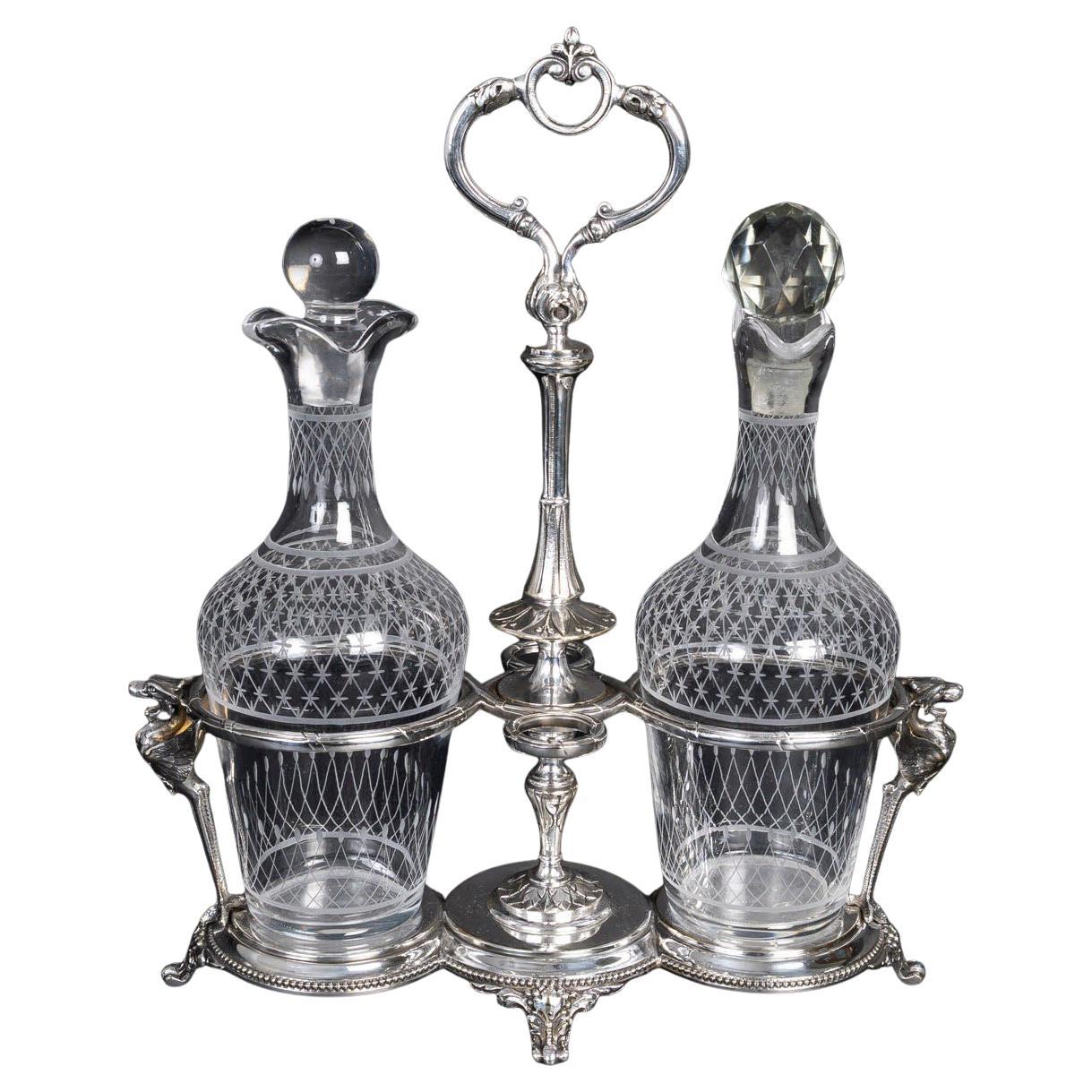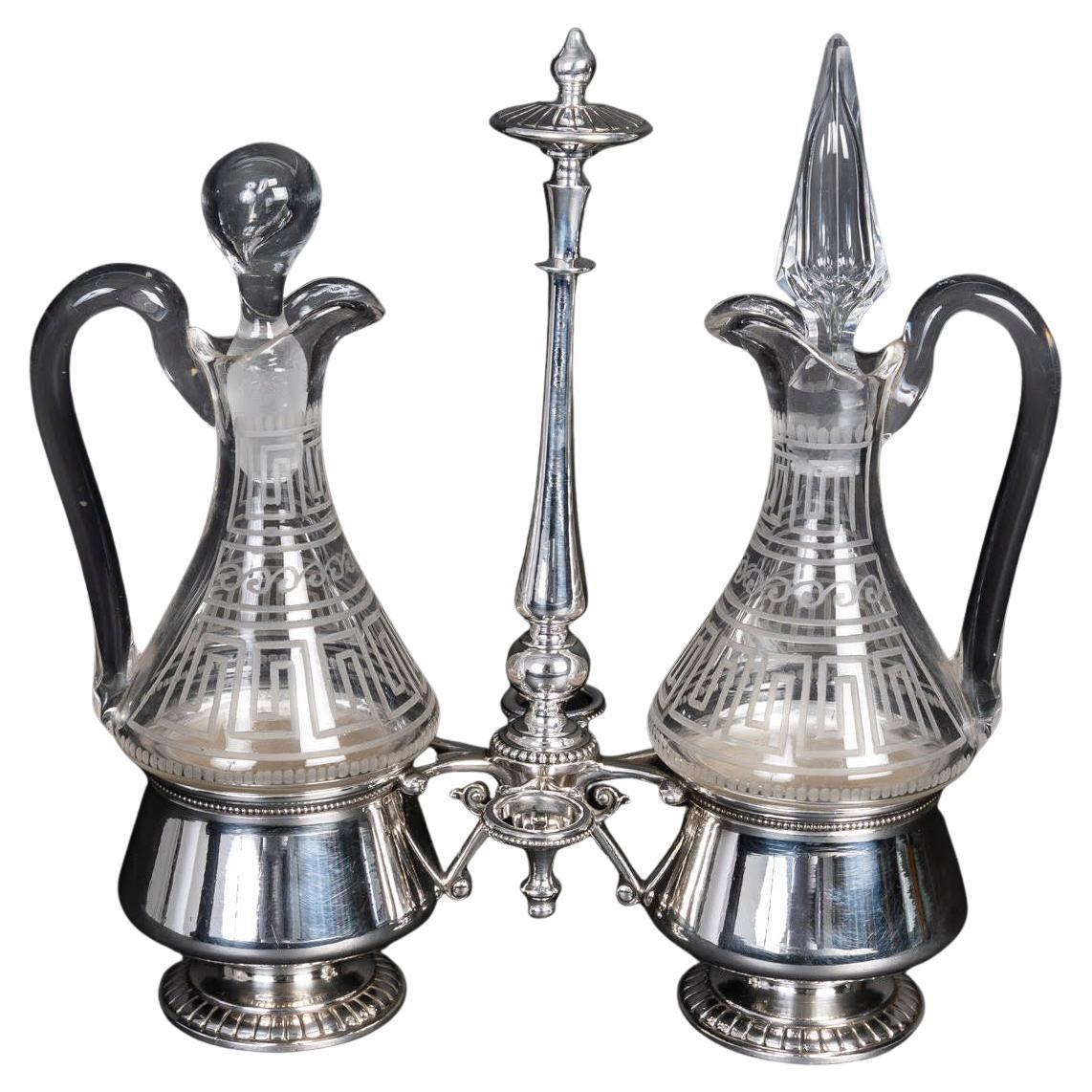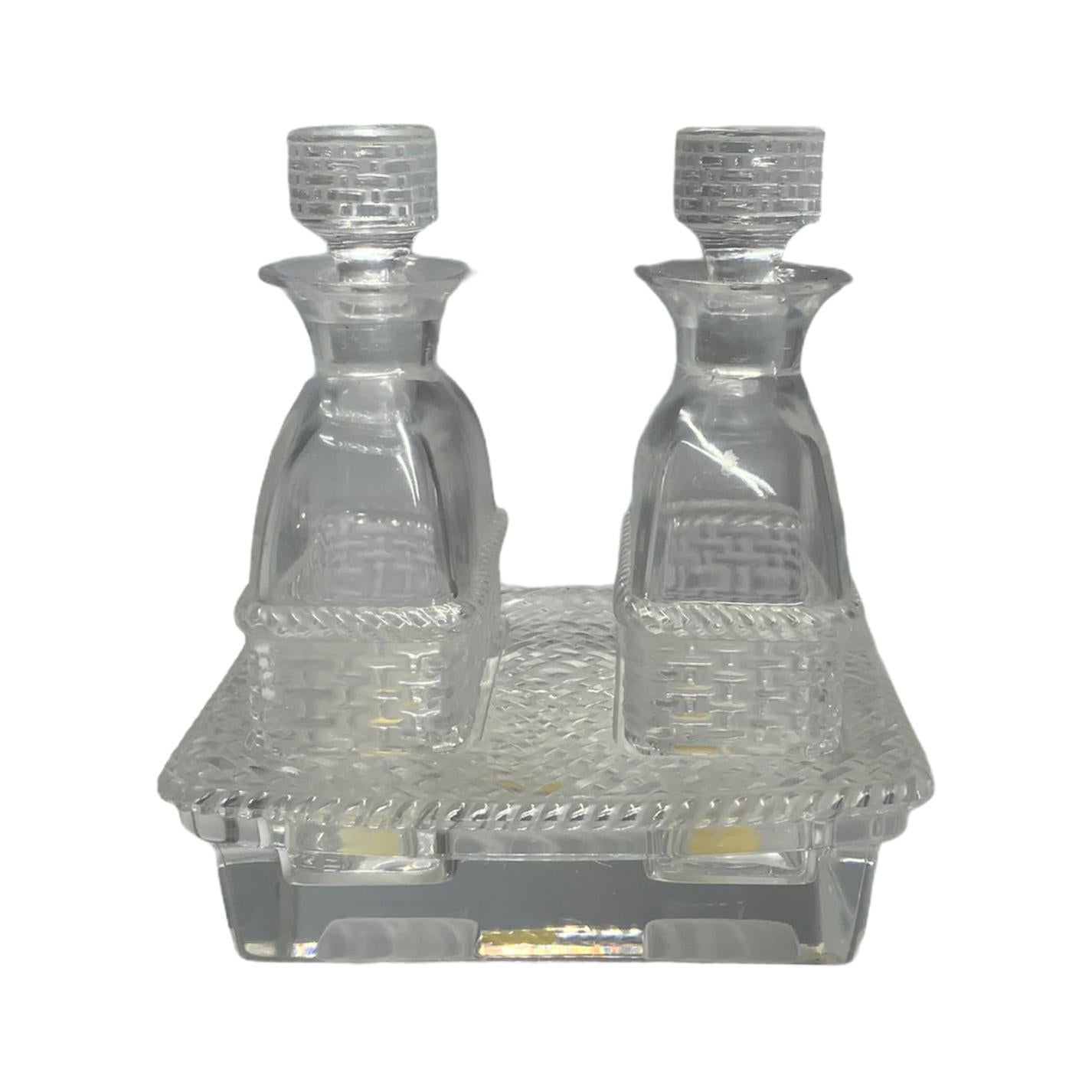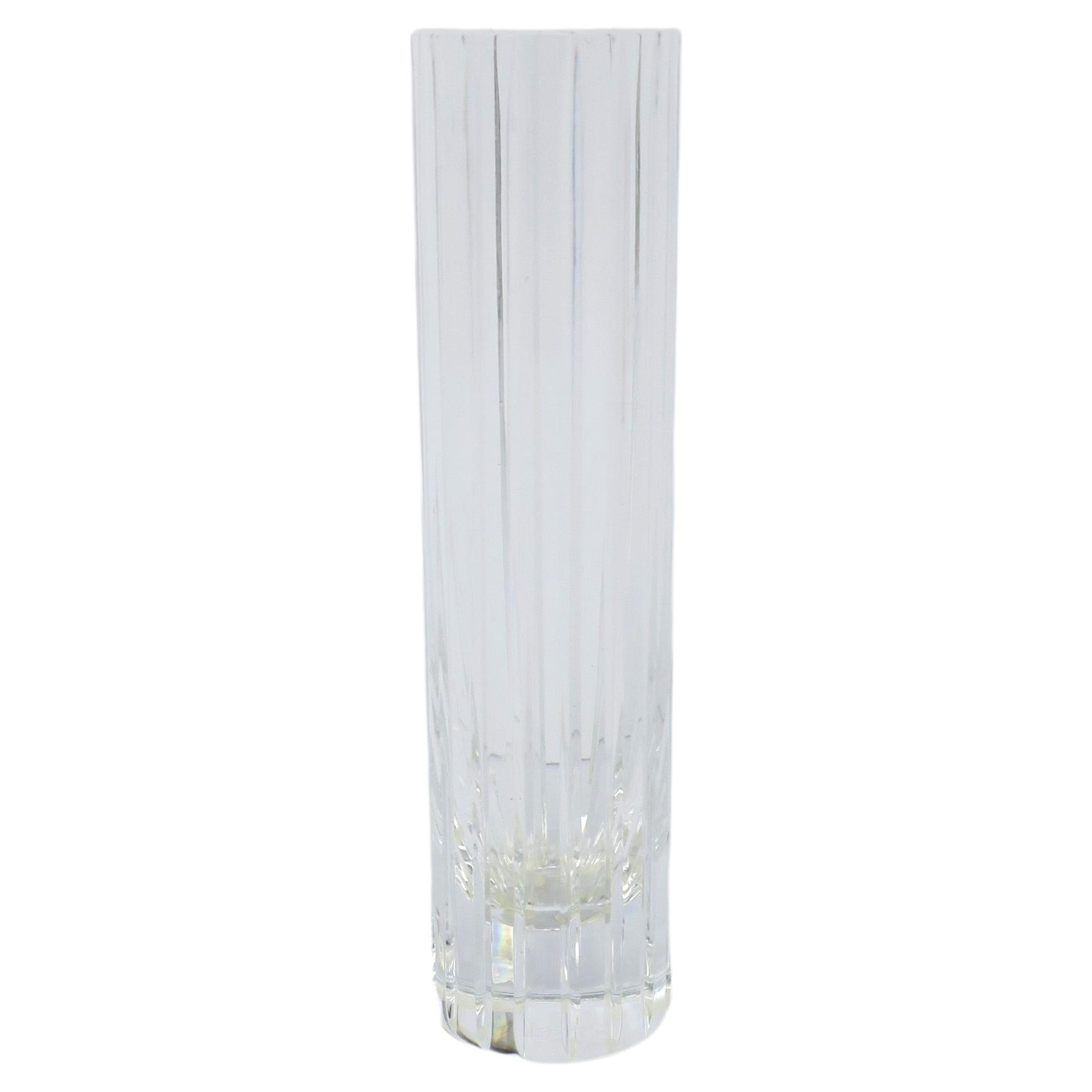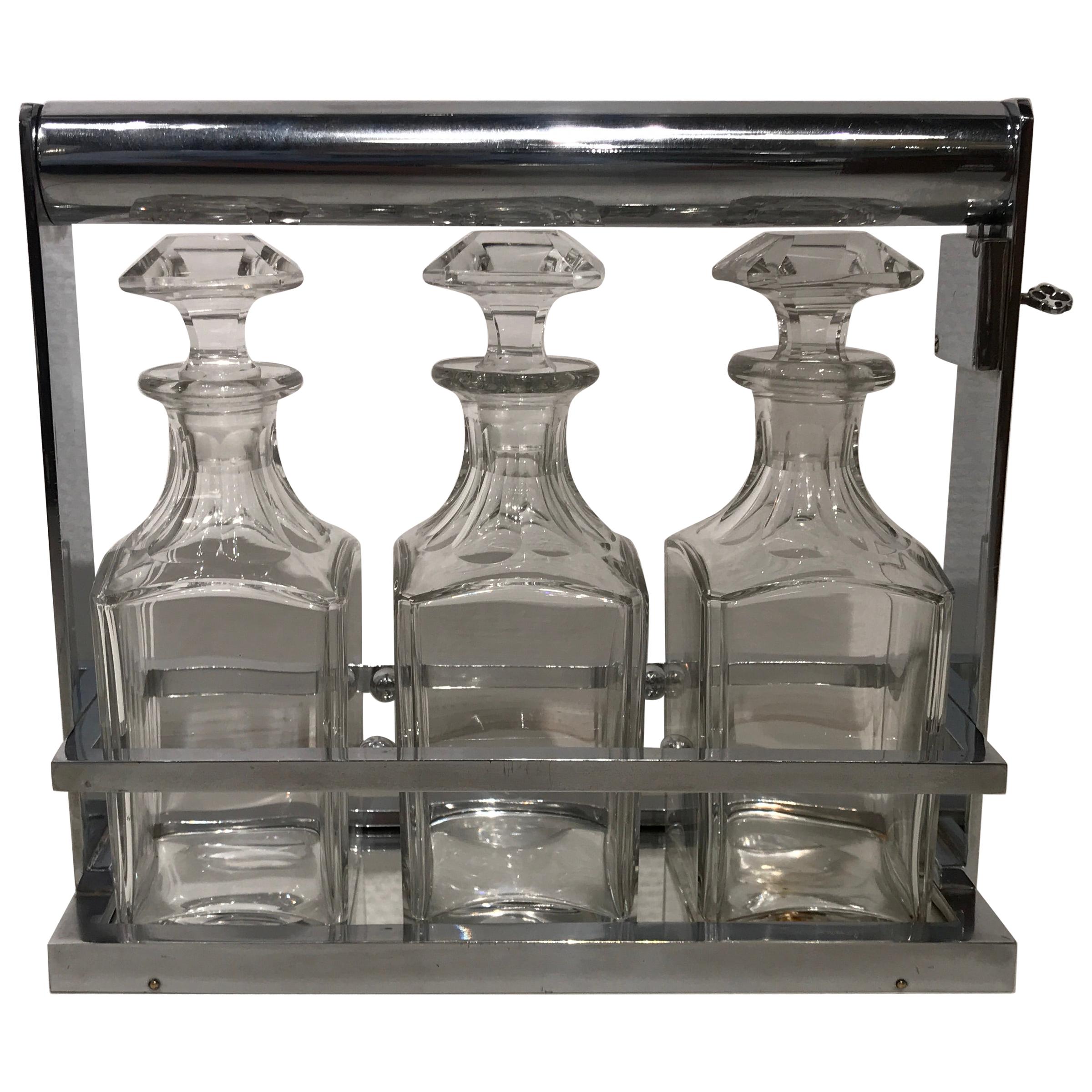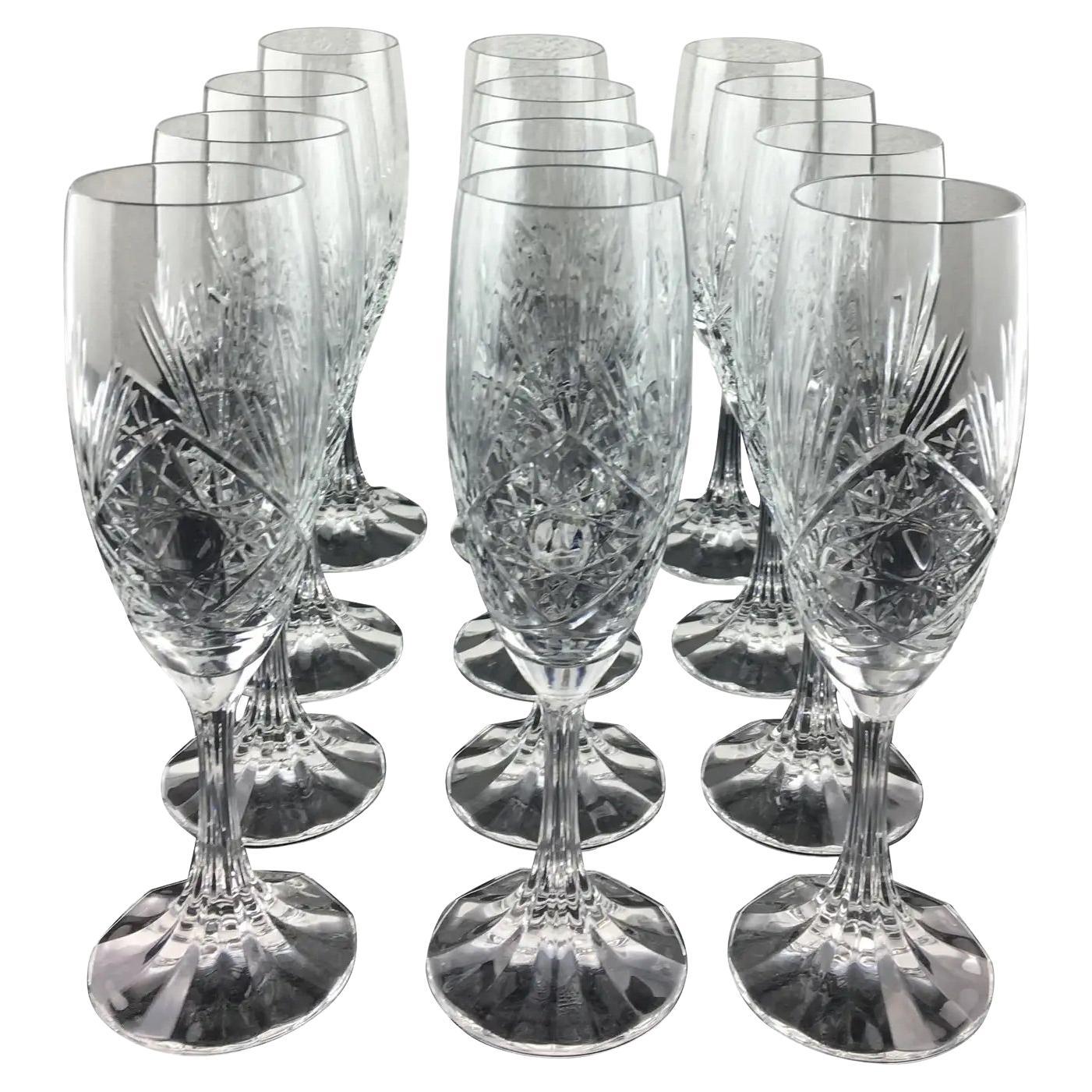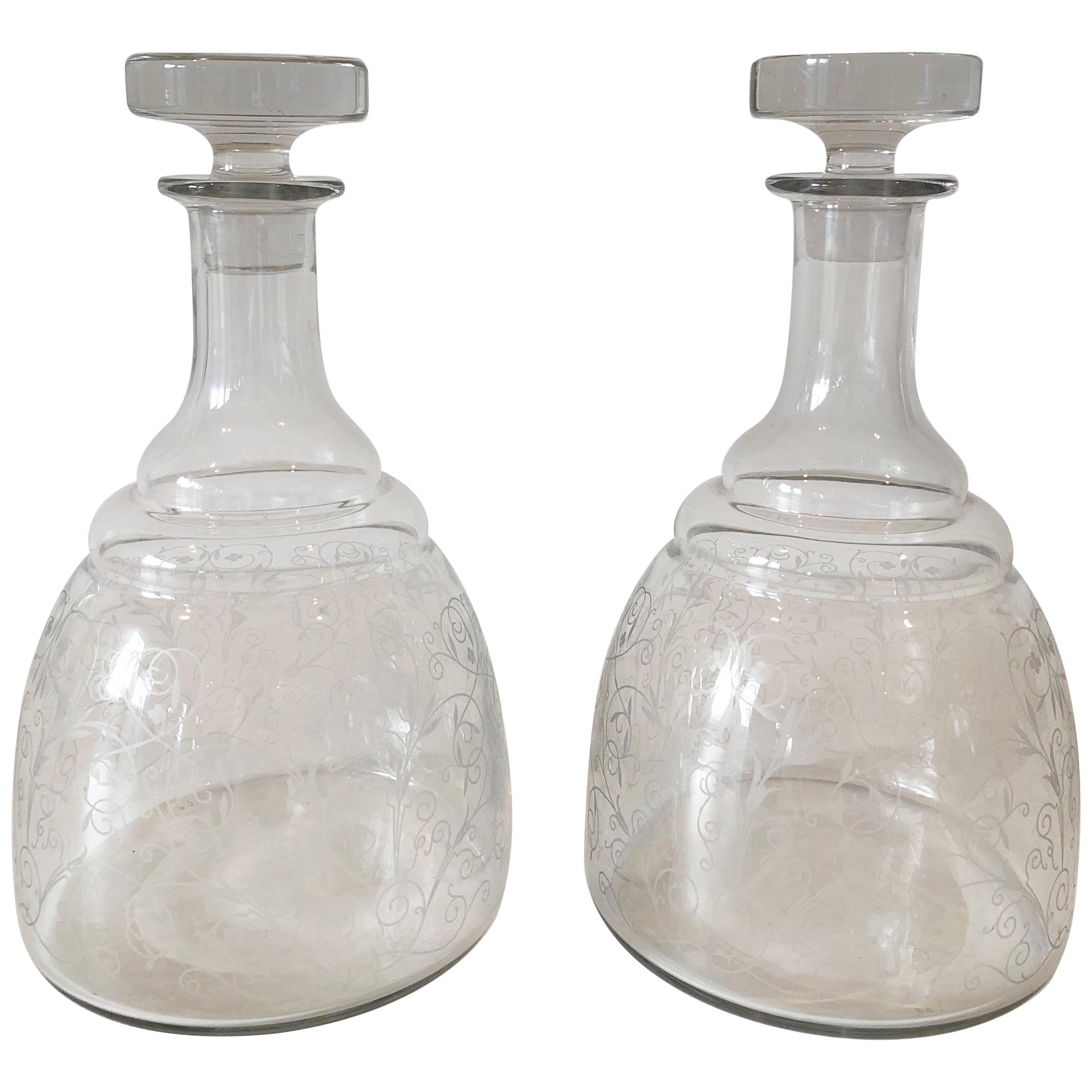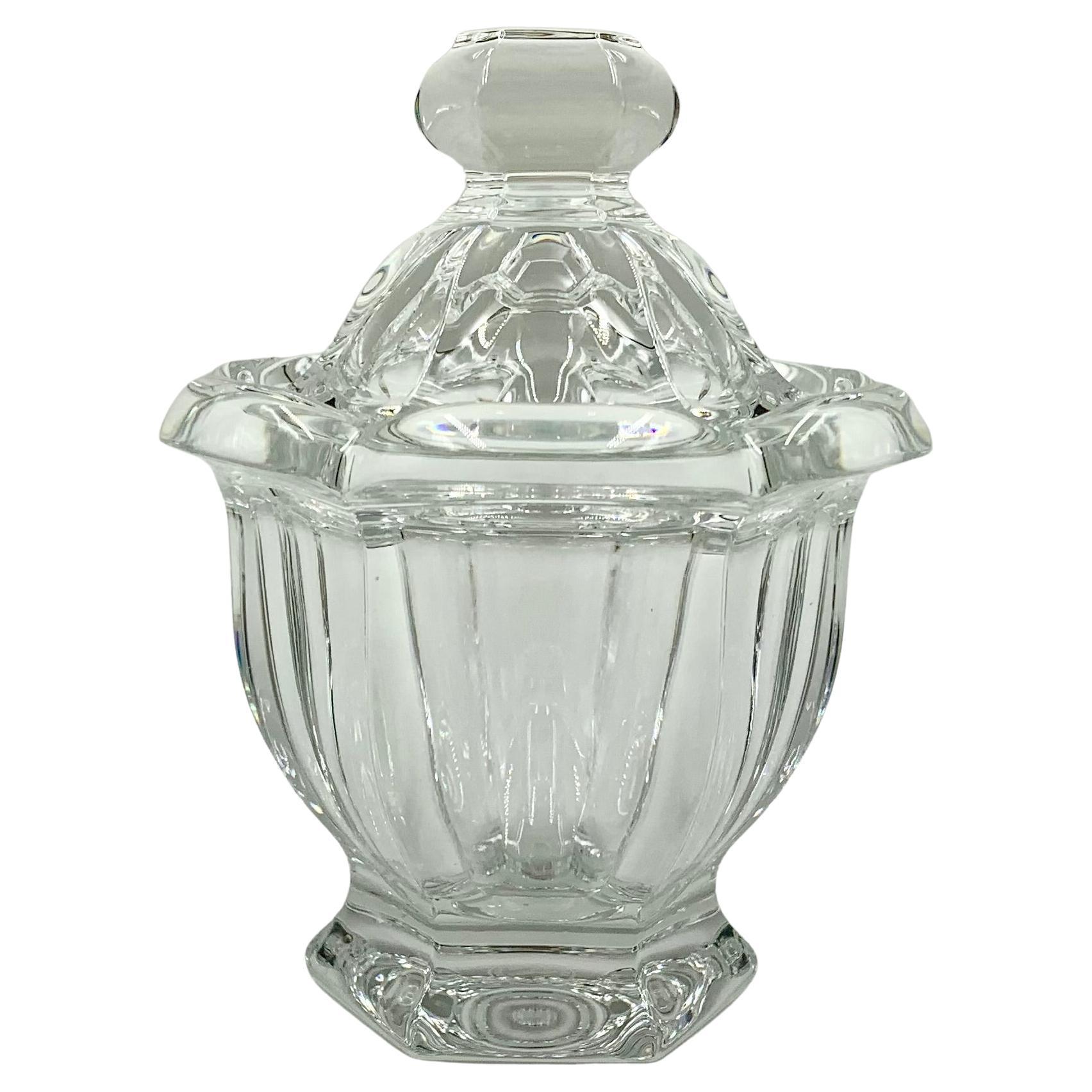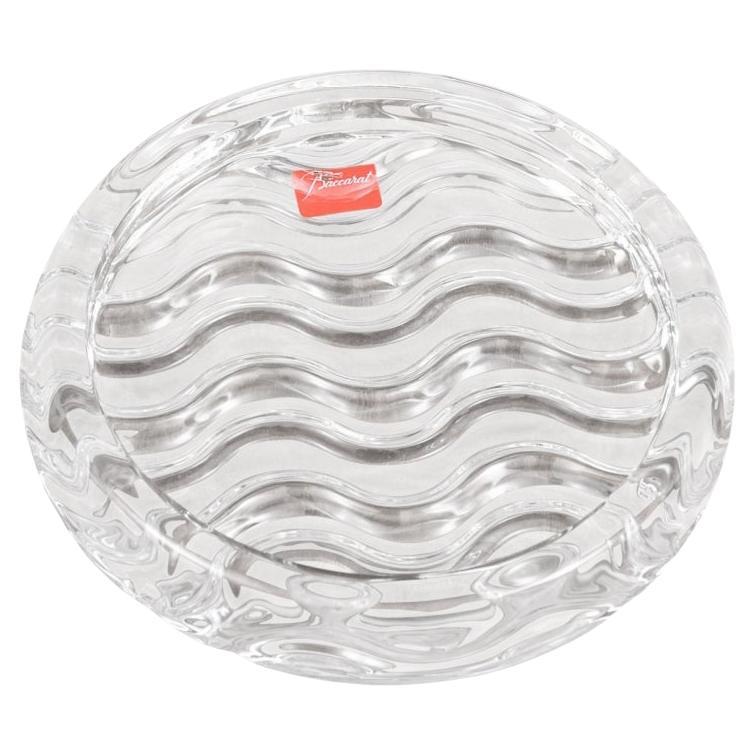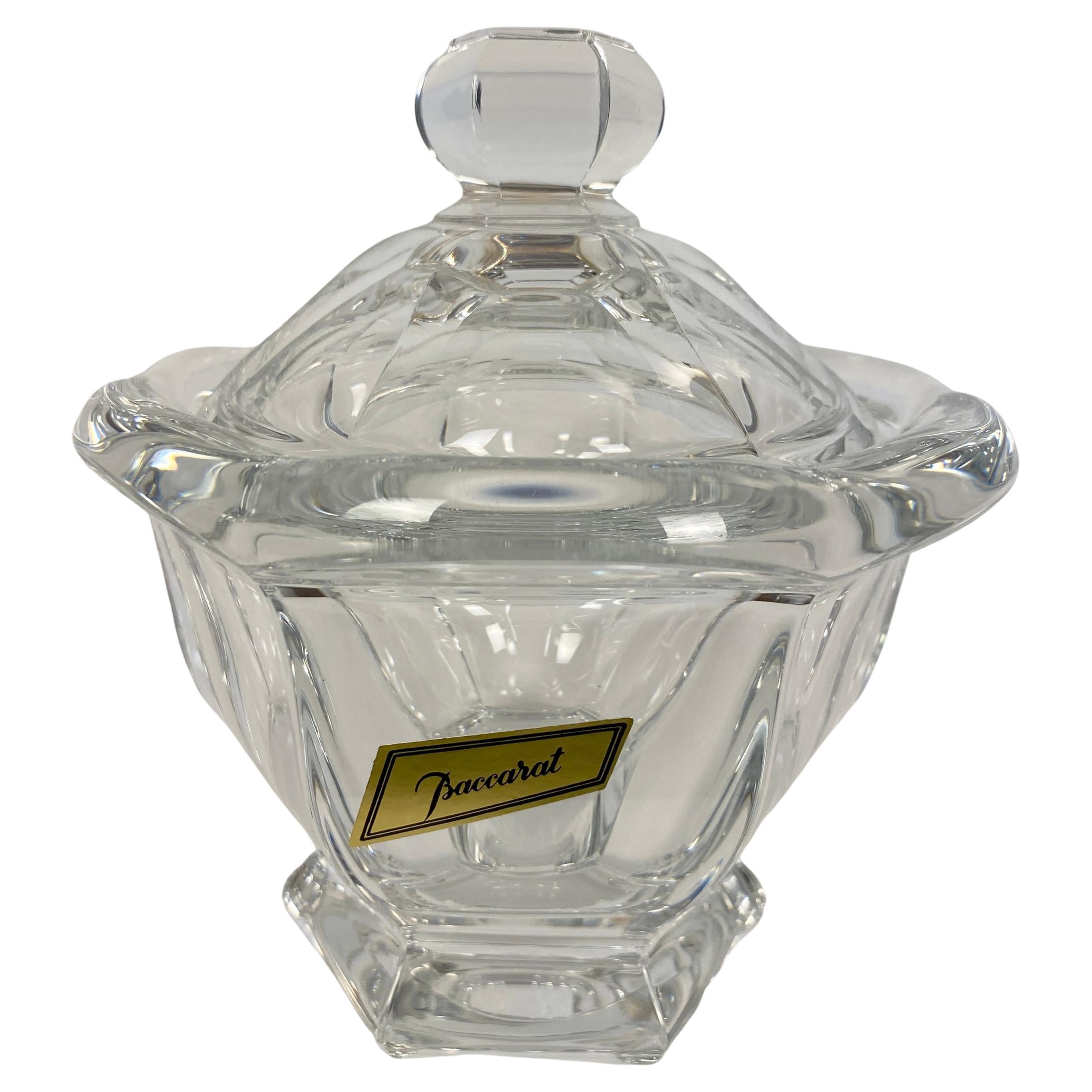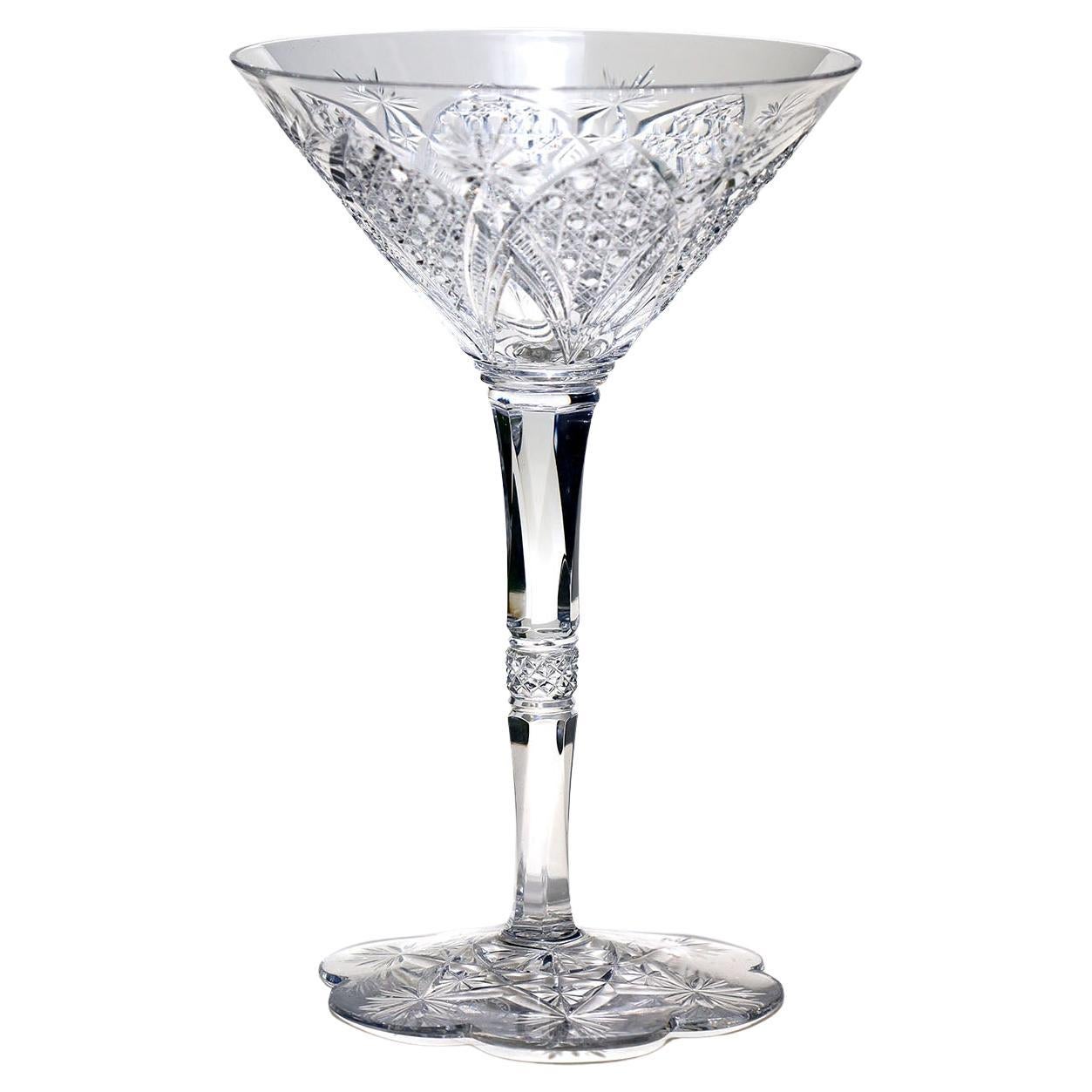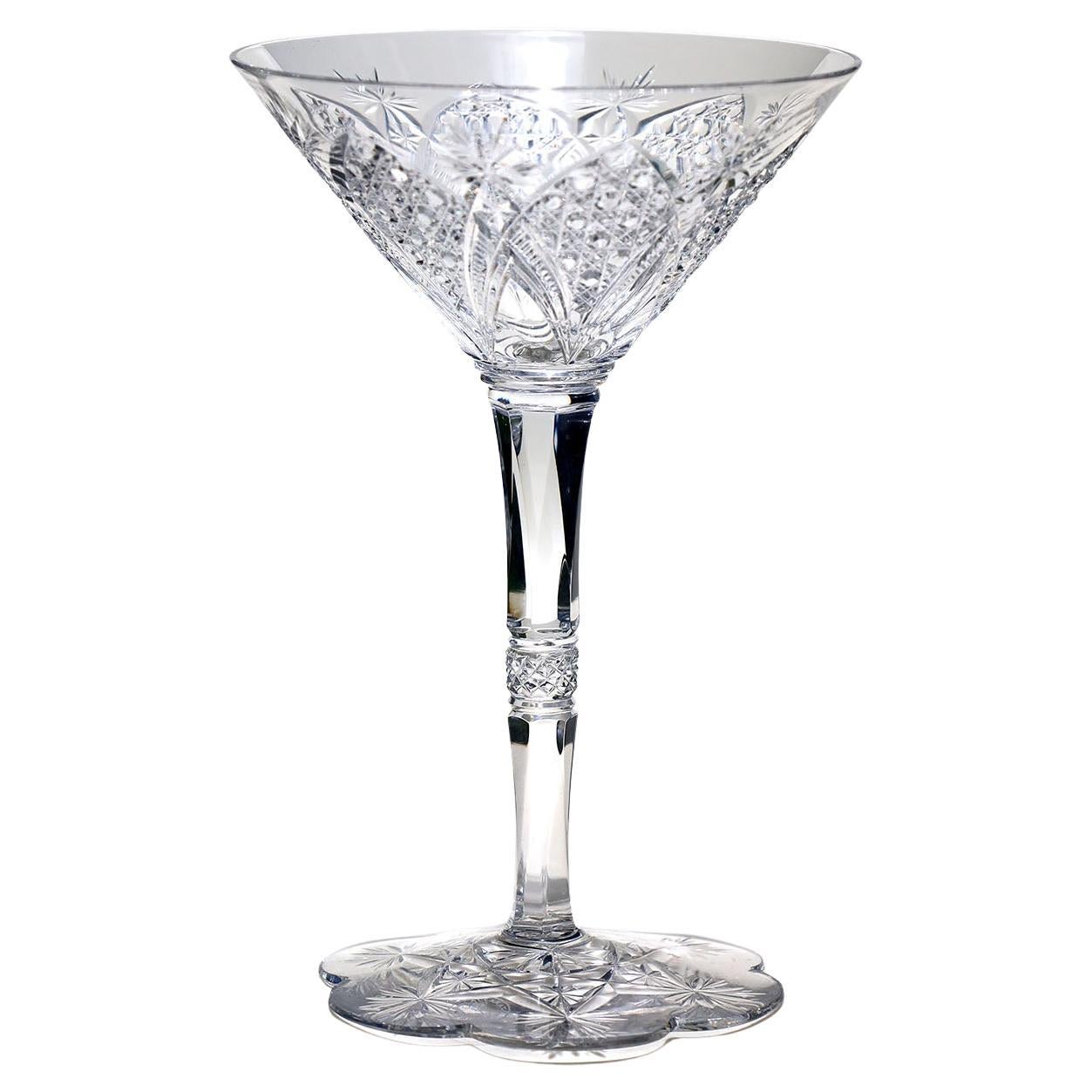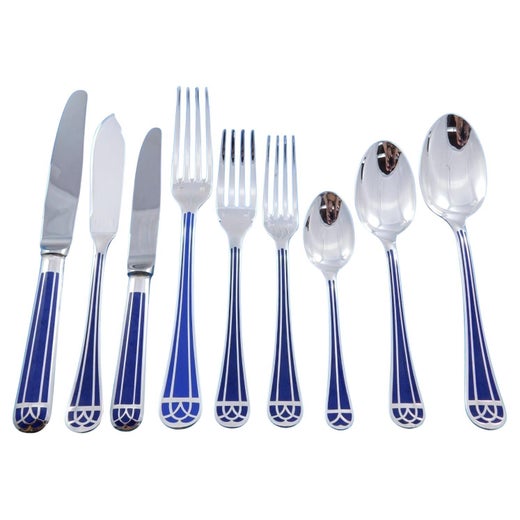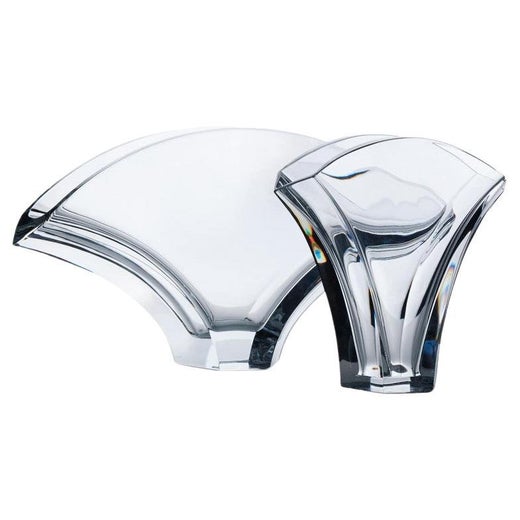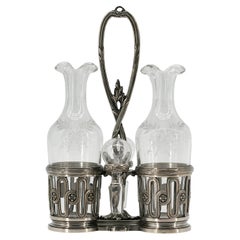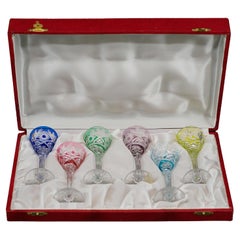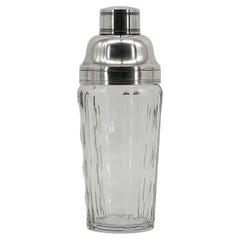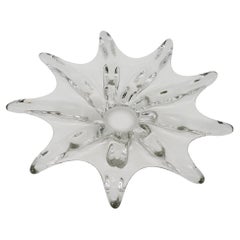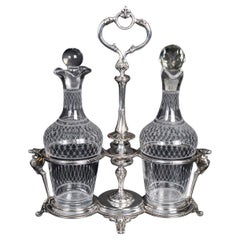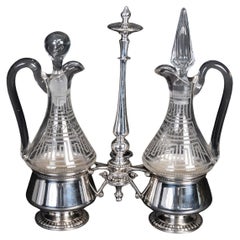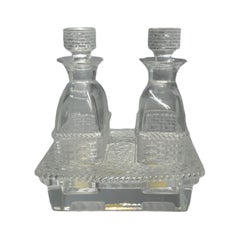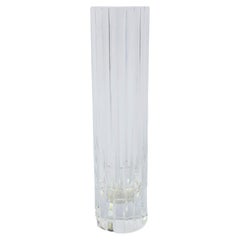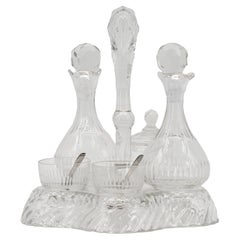
BACCARAT Crystal Oil and Vinegar
View Similar Items
BACCARAT Crystal Oil and Vinegar
About the Item
- Creator:Baccarat (Maker),Christofle (Maker)
- Dimensions:Height: 7.88 in (20 cm)Diameter: 7.88 in (20 cm)
- Style:Napoleon III (Of the Period)
- Materials and Techniques:
- Period:
- Date of Manufacture:1890s
- Condition:
- Seller Location:Saint-Amans-des-Cots, FR
- Reference Number:1stDibs: LU2312342652162
Christofle
Although he started his career as a jeweler in 1830 — after apprenticing with his copper jeweler brother-in-law years earlier — Charles Christofle (1805–63) recognized that Second Empire France had an untapped audience for luxury silverware and tableware.
Gold and silver gilt had been the high-end standard in the 18th century, yet society after the Industrial Revolution demanded a more affordable, but still refined, approach. So in the 1840s, Christofle cornered the market on electrolytic gilding and silver plating, dominating the hold on patents in the country for over a decade. His work soon attracted the attention of Louis-Philippe I and then Napoleon III, under whom he was named Fournisseur de l’Empereur, cementing the prestige of his brand.
While Christofle created decadent centerpieces and tableware for the French palaces — as well as prominent clients like the Orient Express — the company’s electroplating of silverware that was far less expensive than that made by silversmiths attained widespread popularity. At a time when many who could not afford gold or silver still used wooden utensils, Christofle was a game changer for at-home dining. An appearance at the 1893 World’s Columbian Exposition in Chicago furthered the company’s reach to American consumers who would soon rival the manufacturer’s European clientele.
The 20th century saw Christofle adapting to changing tastes in its offerings, such as the Aria collection, which debuted in 1985 with column-like lines on its flatware designed by Bernard Yot, and the playful egg-shaped silverware container introduced in 2015 that opens to reveal a full flatware set. The company also now sells barware, home accessories and even jewelry, harkening back to its roots. Now almost two centuries old, Christofle maintains its reputation as a leading flatware and silverware company under the ownership of the Chalhoub group, its utensils gracing tables in homes, hotels and restaurants all over the world.
Shop authentic Christofle serveware, ceramics, decorative objects and more on 1stDibs.
Baccarat
One of the world’s foremost crystal manufacturers, Baccarat has long been emblematic of luxury and exquisite craftsmanship. Starting in the early 19th century, objects produced by the French company — from stemware to chandeliers to brightly colored paperweights — became a staple of noble and wealthy households across Europe and as far afield as India. Along with the purity and quality of their glass, Baccarat crystal makers can boast a remarkable fluency with a range of design styles — from cut-glass neoclassical pieces to sinuously etched Art Nouveau designs.
Baccarat began as a kind of industrial development project. In 1764, the Bishop of Metz and other landowners in heavily forested northeastern France persuaded Louis XV to sanction a glassworks in the area — timber being a key resource required for the furnaces used in glass production.
In its early years the company produced humble products such as window panes and simple drinking glasses. In 1816 a new owner began making crystal, and seven years later Louis XVIII — who had taken the throne after the defeat of Napoleon — gave Baccarat its first royal commission, for tableware. In the ensuing years, an estimated one-third of the company’s workforce was dedicated to commissions to the Russian imperial court alone.
Spurred by the intense competition between global industries in the latter 19th century — fought in public view in the many world expositions of the era — Compagnie des Cristalleries de Baccarat, as it had finally become known, elevated its level of artistry by adopting new technologies and creating a rigorous training program. The firm broadened its stylistic range, embracing Asian influences and new engraving methods, and increasing production of its now iconic millefiori paperweights.
The designer Georges Chevalier, who worked for Baccarat for more than five decades beginning in 1916, ushered the company into the realm of modernist design. In recent years, Baccarat has employed such renowned contemporary designers as Philippe Starck and Marcel Wanders, ensuring that Baccarat crystal will continue to enjoy pride of place on up-to-date tables. But as you will see from the offerings on these pages, Baccarat has items to suit any taste.
Find antique Baccarat decanters, vases, candle holders, chandeliers and other furnishings and objects for sale on 1stDibs.
More From This Seller
View AllAntique Early 1900s French Napoleon III Sheffield and Silverplate
Crystal, Silver Plate
Vintage 1920s French Art Deco Glass
Crystal
Vintage 1920s French Art Deco Barware
Crystal, Silver Plate
Mid-20th Century Mid-Century Modern Decorative Bowls
Crystal
Antique 1850s French Napoleon III Centerpieces
Crystal, Silver Plate, Bronze
Vintage 1920s French Art Deco Table Lamps
Wrought Iron
You May Also Like
Antique 19th Century French Napoleon III Crystal Serveware
Crystal, Silver Plate
Antique 19th Century French Napoleon III Crystal Serveware
Crystal, Silver Plate
Early 20th Century French Art Deco Crystal Serveware
Crystal
Late 20th Century French Modern Crystal Serveware
Crystal
Vintage 1930s French Art Deco Bottles
Crystal, Metal
20th Century French Crystal Serveware
Crystal
